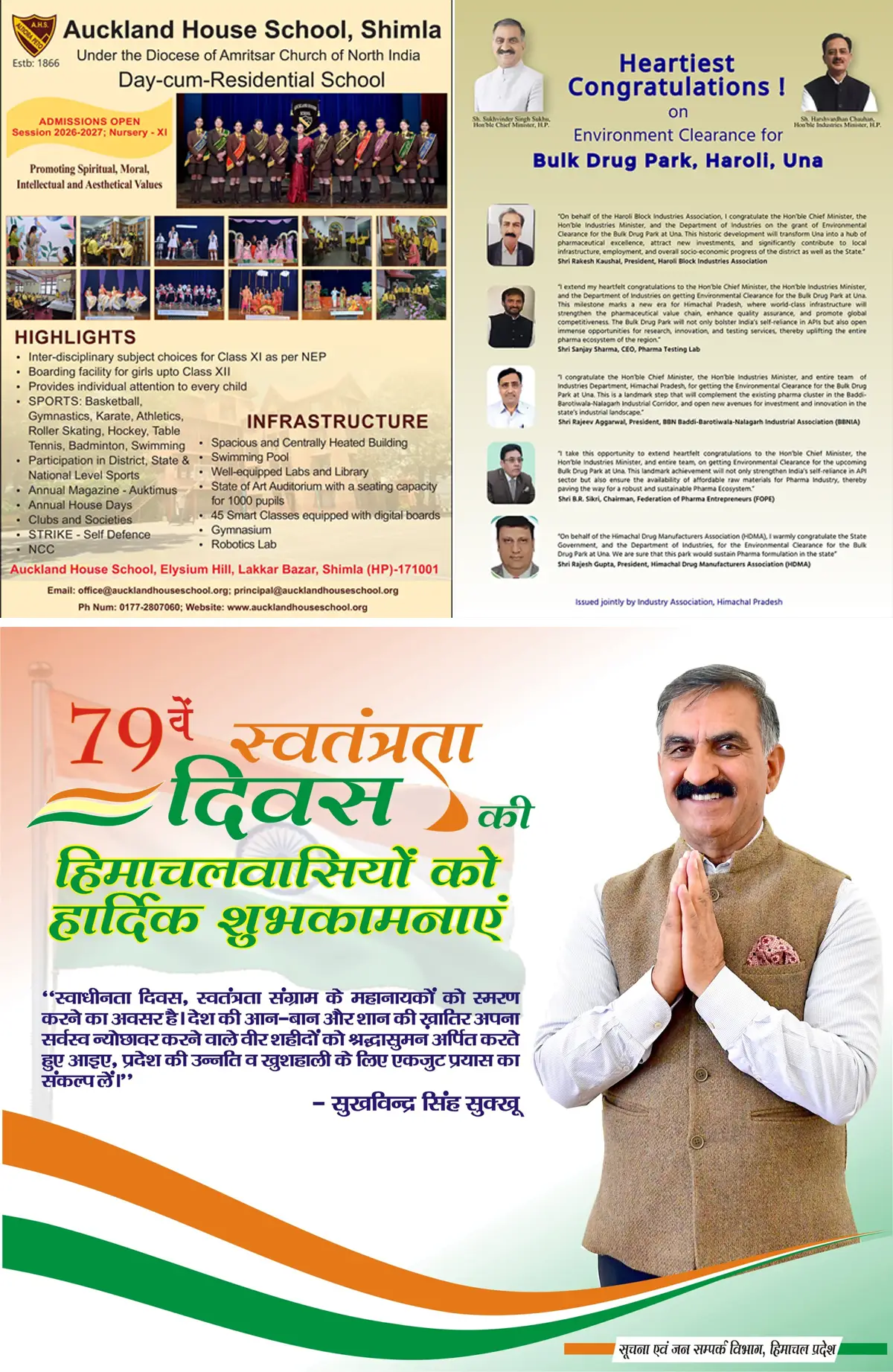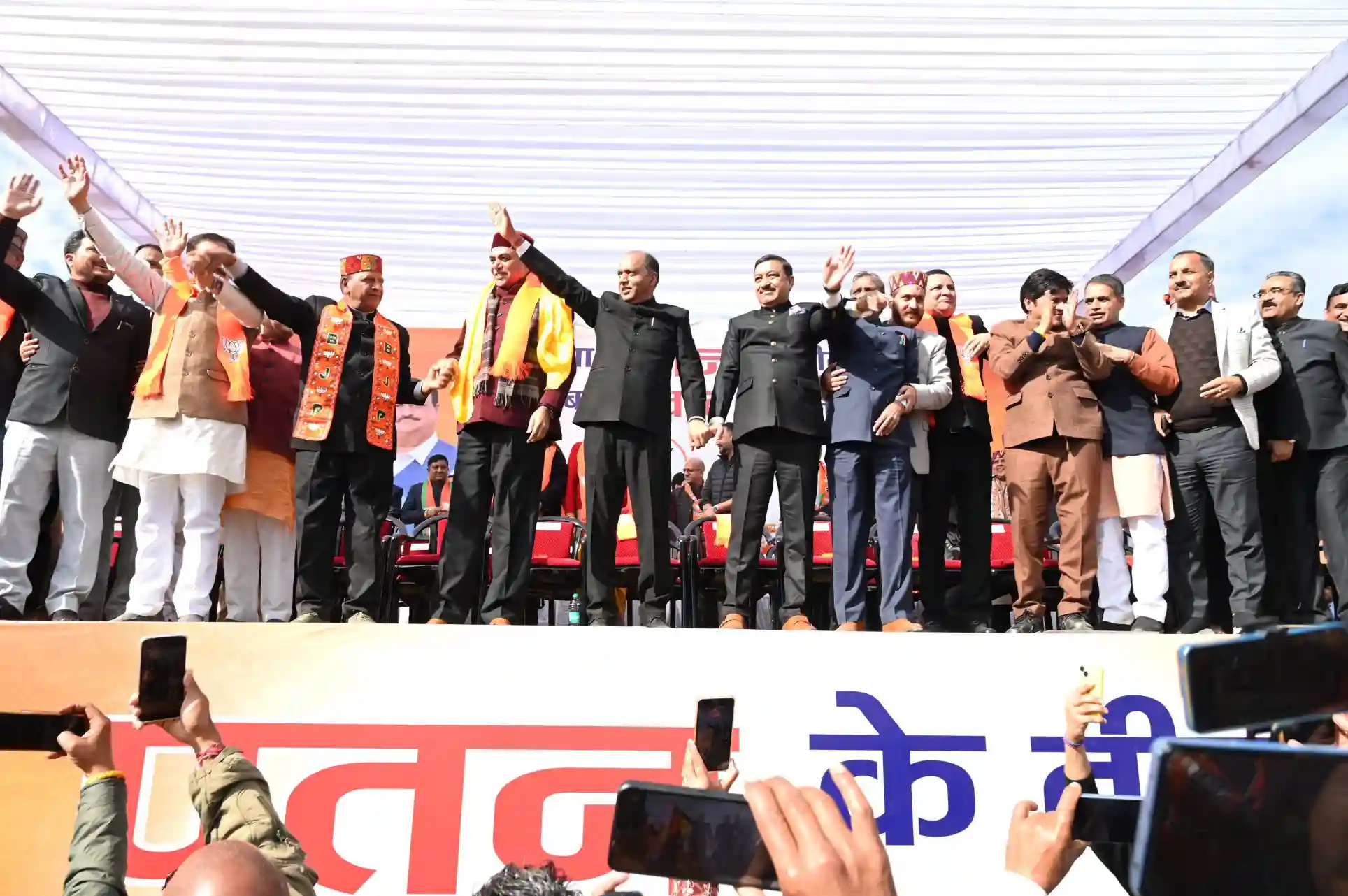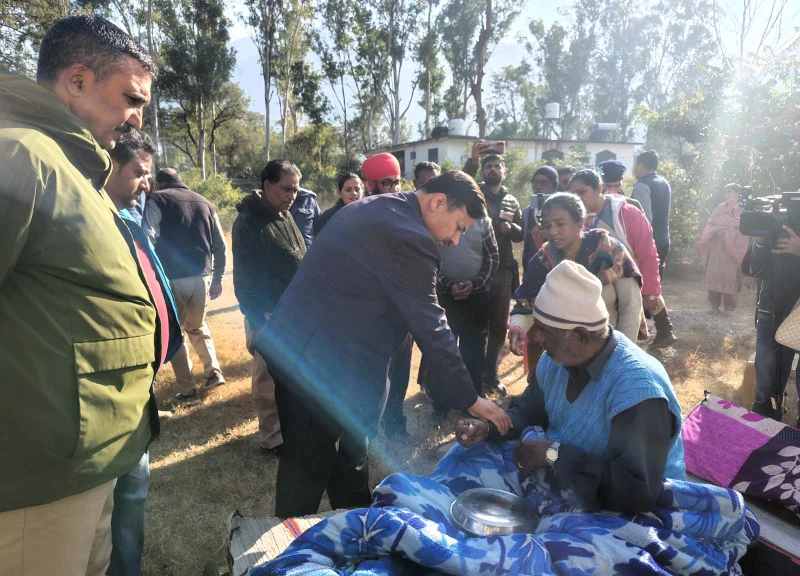Importance of ‘Sair Festival’ in Himachal Pradesh
7 min read
Dr. Pyar Singh Thakur
Himachal Pradesh is famous for its rich culture, various fairs, celebrations and festivals and bulged with rich heritage. All these festivals, while keeping us connected with our loved ones, are also providing employment to the people of Himachal. Many festivals are celebrated throughout the year in Himachal and the Sankranti of almost every month i.e. ‘Sajji or Saja’ is known by a special name and is celebrated as a festival. Accordingly, the first day of the change of Indian native months and the beginning of a new month is called ‘Sankranti’. On almost every Sankranti, some festival or the other is celebrated in Himachal Pradesh, which is a symbol of the uniformity of the hill culture of Himachal Pradesh with the ancient Indian civilization or in other words, the native calendar. On 16th September, i.e. on the Sankranti of Ashwin month, the festival of Sair or Sayar (Sair Festival or Sayar Festival of Himachal) is celebrated with great pomp in Kangra, Mandi, Hamirpur, Bilaspur and Solan and some other districts of Himachal Pradesh.
Saira Utsav or Saira Utsav is also one of these festivals. Saira festival (Sair festival) is celebrated on the solstice of Ashwin month. Actually this festival is celebrated to mark the end of rainy season and the beginning of autumn season. At this time Kharif crops ripen and it is time to harvest, so this festival is celebrated to thank God. Kharif crops are harvested only after Saira festival. On this day, a portion of crops and seasonal fruits are offered to ‘Sairi Mata/Sair Devata’ and along with that Rakhis donned by people during Raksha Bandhan festival are also removed and offered to Saira Mata or Sair Devata.
In cold areas, this is considered the beginning of winter and preparations for winter begin. People store grains and wood for the winter. As soon as winter arrives, many festivals begin. After winter, various fasts and festivals are celebrated till Diwali. One belief behind celebrating this festival is that in ancient times, during the rainy season, people fell prey to many diseases and natural disasters due to the unavailability of medicines and those who survived considered themselves lucky and happily celebrated this festival that fell after the rains. Since then, this festival is celebrated with great pomp and show. The festival of Sayar is famous for the worship of grains and the purchase and sale of oxen. This festival related to agriculture is celebrated with great pomp not only in rural areas but also in cities. After the rainy season, farmers and cattle breeders make arrangements for the ripening of crops in the fields and fodder for the winter only after the festival of Sayar.
The festival of Sayar is also considered to be an indicator of the end of the rainy season. On this day, the month of Bhadon ends. During the month of Bhadon, the gods and goddesses leave the temples to fight with the witches. They return to their temples on the day of Sayar. On this day, in the temples of rural areas, the Gurs or Priests of the gods and goddesses tells the people about the war between the gods and witches through the ‘Khel of Devs & Devis (Forescast by gods and goddesses) and also tells which side has won. In the rainy season, the Guru of the god also tells about the treatment for which person in which house is under the influence of evil spirits. On the day of Sayar, the newlywed brides return from their maternal home to their in-laws’ house. It is believed that during the month of Bhadon, the bride does not see her mother-in-law’s face in the first year of marriage. In such a situation, she goes to her maternal home for a month. The way of celebrating Sair is different in every region. While Sair is celebrated as a family festival in areas like Kullu, Mandi, Kangra. etc., it is celebrated collectively in Shimla and Solan. There are different ways of celebrating Sair in every region of Himachal Pradesh.
Sair/Sayar festival is celebrated collectively in Shimla and Solan. Fairs are held at various places on this day and people participate in them enthusiastically. Drums are played and other folk songs and folk dances are organized. ‘Bull fight’ is organized in Mashobra of Shimla and Arki of Solan. This is almost like the fights held in Spain, Portugal and Latin America. People buy utensils and clothes in the fairs. People distribute sweets and walnuts to their neighbors and relatives. Many dishes are also prepared at home. There is a district level fair of Sair in Arki of Solan.
In Kullu, the Sair is celebrated as ‘Sairi-Saja’. The previous night of the sair, a feast of rice and mutton is served. The next day, the totem (‘Kul Devta’) is worshipped for which preparations begin early in the morning. After cleaning and taking a bath, Halwa is prepared and distributed among everyone. This festival is about meeting relatives and visiting their homes as guests.
People congratulate each other on the festival by giving each other ‘Dub’ which is called ‘Jub’ in the local language. People believe that on this day the gods come to earth from heaven and people welcome them with drums. Anyway, in Himachal, every village has its own god or goddess, so people worship and welcome them on this day. Sair is also celebrated with great enthusiasm in the market. Walnuts are bought and distributed in the market on this day. You can see walnut sellers at many places on the roadside in the market.
The tradition of playing walnuts during the festival of Sair still exists in rural areas. This game is played at the crossroads of the street or in the corner of the courtyard of the house. In this, the players aim at the walnuts scattered on the ground from a distance. If the aim is right, the walnuts belong to the one who hits the target. In this way, this game is quite popular among rural children, old people and youngsters in rural areas of Himachal Pradesh.
Apart from this, dishes like Kachori, Siddu, Childu, Gulgule are also made. There is also a tradition of taking blessings from the elders. It is called ‘Drub Dena’ in the local dialect. For this, the person giving Drub takes five or seven walnuts and grass in his hand. He gives it to the elders and touches their feet. The elders also give blessings by putting Drub to their ears. If someone does not give Drub to the elders on the festival of Sair, it is considered bad. Even small differences are resolved by giving Drub.
Sair is celebrated in the different parts of the Mandi District and throughout the Himachal Pradesh. The Sair Festival at Mandi District is the major attraction for the visitors. This festival is organised in mid-September .The Sair Festival is one of the many festivals. According to the local stories of Himachal, Lohri and Saira were two real sisters. Saira was married in a poor family, so it is celebrated in the month of September and its dishes are tasty but not very expensive. Whereas Lohri was married in a rich family, so probably this festival is celebrated with great pomp with many sweets made of desi ghee, chivda, peanuts, khichdi, etc., which starts a month before with Lukdiyon.
There is a different tradition of celebrating Sair in Kangra, Hamirpur and Bilaspur. Preparations for the Sair Puja are started a day in advance and the Puja Thali is decorated at night itself. A portion of the crops of every season is decorated in the Puja Thali.
For this, wheat is spread on a plate and seasonal fruits like corn, paddy ears, cucumber, guava, galgal, etc. are kept on it. It is considered auspicious to keep the leaves of every fruit along with it in the puja. Earlier, on the day of Sair, the village barber used to go to every house before dawn with the idol of Sairi Mata and people used to give him grains, money and Suhagi as offerings. Although now festivals and celebrations are not celebrated in the way the old people used to celebrate, but still people in the villages have preserved the traditions to a great extent. Now people worship the idol of Ganeshji instead of Sairi Mata and now barbers do not go to people’s houses. Sair Festival is celebrated in Himachal Pradesh to mark the end of the crop harvest, prepare for the harsh winter ahead and the return of the gods from heaven. Six to seven dishes are prepared in a day which definitely include Patrode, Pakoda and Bhatura. Apart from this, dishes like Kheer, Gulgule, Chiladu, etc. are also prepared. These dishes are decorated in a plate and distributed among the neighbours and relatives and dishes are also taken from their house. The next day, Galgal is thrown in the paddy fields and prayers are offered for a good harvest next year. Sair Festival is celebrated in Himachal Pradesh to mark the end of the crop harvest, prepare for the harsh winter ahead and the return of the gods from heaven. The festival marks invoking gods amid the beating of drums and blowing of trumpets and offering of the harvested crops to the gods for a bumper crop in the next summer. As per the tradition, the Sair festival marks the end of summer and onset of harsh winter. This festival also becomes an excuse to meet each other as they are not able to meet each other due to rain. The girls who have come to their maternal home during the ‘kaala mahina’ i.e. Bhadon, go back to their in-laws’ house. These small festivals and celebrations keep people connected and are also a good excuse to meet from time to time. Hope these traditions of Himachal Pradesh continue like this and people of Himachal Pradesh keep celebrating festivals with such joys and spread the message of the rich culture of Himachal Pradesh throughout the world.






